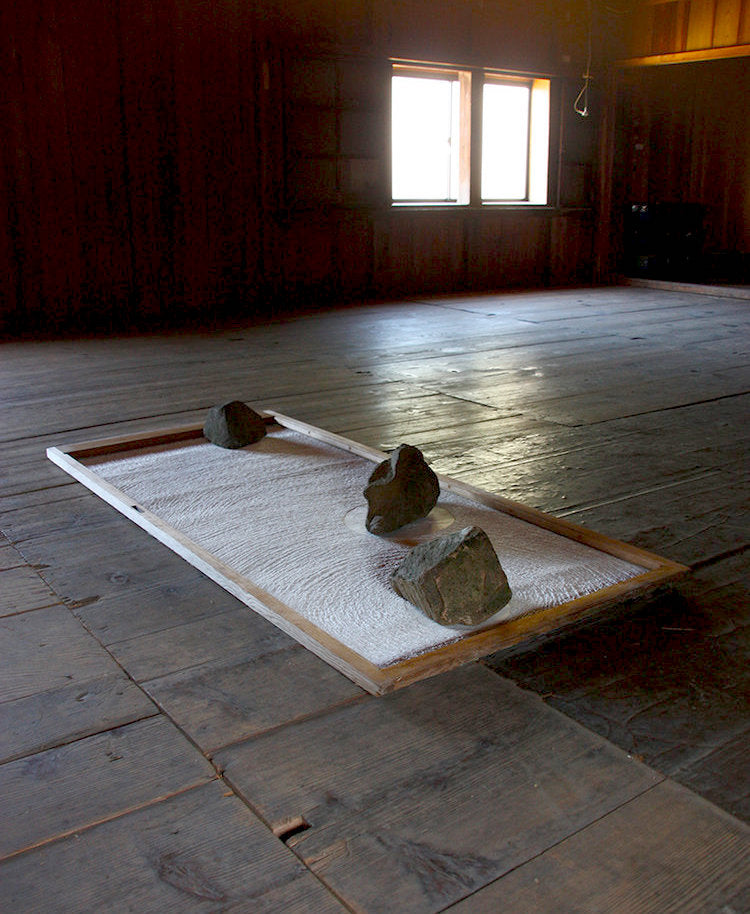
Nicholas Cladis is an interdisciplinary artist and papermaker who lives and works in Iowa City, IA. He is the papermaking specialist at the University of Iowa Center for the Book, where he lectures and manages the Oakdale paper research facility. Nicholas is an active researcher and practitioner of traditional and non-traditional papermaking processes. For six years he lived and worked in Echizen, Japan — an area with over 1,500 years of papermaking history — and continues to maintain an active relationship with the papermaking community there. He regularly contributes to the Future of Craft Villages research group at Fukui Prefectural University, and serves on the executive committee of Imadate Art Field, a non-profit arts organization based in Echizen.
-

letter to a dream [JP: 夢への手紙], 2018
dual video projection view with papermaking tool installation detail; projection showed two silhouettes of hands, along with an ambient audio track featuring a song frequently sung by elderly craftspeople in Echizen (this work is an observation of the power of hands, and the sense of touch, and the importance of these in papermaking)handmade paper (kozo, hemp), video projection and audio, found papermaking tools
each screen 60 x 82”Washi Union, Echizen, Japan
-

flow, 2019
detail100% pigmented kozo with mizukiri (cutting with water) to create the texture
Nishino Heritage House in Echizen, as part of the 2019 Exhibition of Contemporary Paper Art.
-

landscape recollected, 2019
exhibition viewhandmade paper (kozo), stone, re-purposed sliding door
40 x 80”Echizen Washi Union, Echizen, Japan
village tones (Part 2) featuring Naho Murata
Audio-visual sound art performance featuring live papermaking and live papermaking sampling; additional samples and video made from field recordings done by the artist, and original sound waves crafted by Nicholas to represent collected datasets regarding river systems and papermaking plant cultivation from 1926 to 2018.




